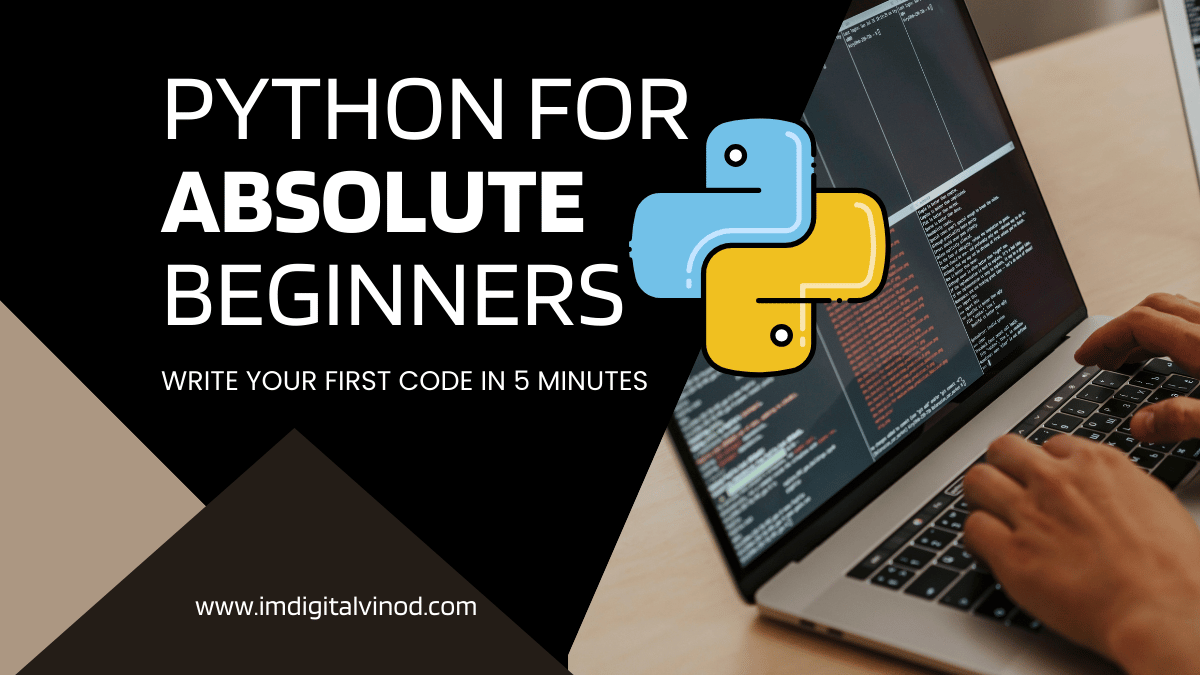Python for Absolute Beginners: Write Your First Code in 5 Minutes
Python for Absolute Beginners:
How to Write Your First Python Code in 5 Minutes
Are you new to coding? Want to start with an easy and beginner-friendly programming language? Python is the perfect choice! It is simple, readable, and widely used for web development, automation, data science, and more.
In this guide, you’ll learn how to write your first Python program in just 5 minutes. No prior experience is required—just follow along!
Step 1: Install Python
Before writing your first program, you need to install Python on your computer.
How to Install Python:
- Download Python – Go to python.org and download the latest version.
- Install Python – Run the installer and make sure to check the box that says Add Python to PATH before clicking “Install Now.”
- Verify Installation – Open your command prompt (Windows) or terminal (Mac/Linux) and type:
python --versionIf it displays the version number, Python is installed successfully!
Step 2: Write Your First Python Program
Now, let’s write your first Python program!
- Open IDLE (Python’s built-in editor) or any text editor (Notepad, VS Code, PyCharm, etc.).
- Type the following code:
print("Hello, World!") - Save the file as hello.py
- Run the program:
- If using IDLE, just press F5.
- If using the command line, navigate to the file location and type:
python hello.py
- You should see:
Hello, World!Congratulations! You just wrote and executed your first Python program.
Step 3: Understanding the Code (Python for Absolute Beginners)
Let’s break down the simple program:
- print() – This is a built-in function in Python that displays text on the screen.
- “Hello, World!” – The text inside the parentheses is called a string, which is displayed when the program runs.
This is the traditional first step in learning any programming language!
Step 4: Explore Basic Python Concepts(Python for Absolute Beginners)

Now that you have successfully run your first program, let’s explore a few basic Python concepts:
1. Variables
Variables store data that can be used later.
name = "John"
print("Hello,", name)Output:
Hello, John2. Data Types
Python supports different types of data:
x = 10 # Integer
y = 3.14 # Float
name = "Python" # String
is_learning = True # Boolean3. Loops
Loops help in running a block of code multiple times.
for i in range(5):
print("Python is awesome!")4. Conditional Statements
Conditional statements help in decision-making.
age = 18
if age >= 18:
print("You are an adult.")
else:
print("You are a minor.")Conclusion (Python for Absolute Beginners)
Congratulations! You’ve written your first Python program and explored some basic concepts. Python is easy to learn and opens up opportunities in various fields like web development, data science, AI, and automation.
Keep practicing, experiment with small projects, and you’ll become a Python pro in no time!









